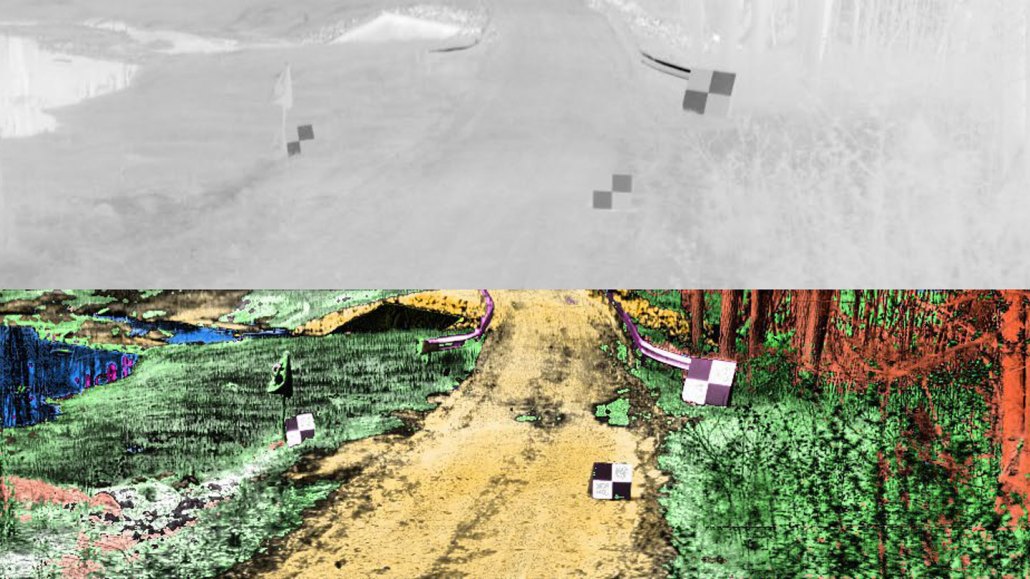How artificial intelligence sharpens blurry thermal vision images
A new technology could one day help improve self-driving cars

Conventional thermal vision depicts this nighttime scene of a forest road in ghostly grays (top). A new AI-aided technology takes thermal data and creates a sharper image (bottom). The system adds color based on the objects detected, shading water blue, for example.
F. Bao et al/Nature 2023





